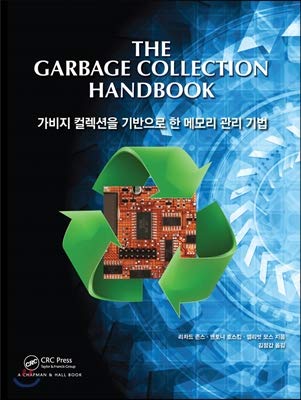Second edition, 2023

The second edition is testament to the continued progress in garbage collection, both academically and in major deployed systems. All chapters have seen some revision and refinement. The more significant changes include:
- Considerable revision of the discussions of finalisation and weak references.
- Managing changing object layout (needed for dynamic languages).
- Garbage collection on the GPU.
- Expanded discussion of barriers, including load barriers.
- Expanded discussion of the Garbage-First (G1) collector.
- Updated discussion of Azul's Pauseless and C4 collectors.
- Discussion of new collectors including Collie, Transactional Sapphire, Platinum, ZGC and Shenandoah, and LXR.
- New chapters on Energy-aware collection and Collection of persistent systems based on byte-addressable non-volatile memory.
- The glossary and bibliography have been expanded substantially as has the index.
While memory management continues to be a dynamic field of work, this new edition captures the most important developments of the last decade, maintaining the utility and relevance of this handbook.
e-book
Particular effort had gone into the e-book, which adds numerous enhancements to the print version.
- There are over 37,000 clickable links from every reference to its target (chapter, section, algorithm, figure, table, glossary, and so on).
- Clicking on a citation takes the reader to its entry in the bibliography.
- Almost all bibliographic entries have a link to the original paper.
- Each entry in the bibliography includes links back to its referring citations.
- All technical terms in the text are linked to their entries in the glossary.
- Index entries link back to where the entry was mentioned.
First edition and versions
Print

2016 A revised printing, in conjunction with the new e-book version, including all the errata to date.
2012 The original print version was published in English with a publication date of 2012 (although the book went on sale from September 2011).
e-book
2016 The e-book adds numerous enhancements to the 2016 print version.
- There are clickable links from every reference to its target (chapter, section, algorithm, figure, table and so on).
- Clicking on a citation takes the reader to its entry in the bibliography.
- Almost all bibliographic entries have a link to the original paper.
- Each entry in the bibliography includes links back to its referring citations.
- Index entries link back to where the entry was mentioned.
- All technical terms in the text are linked to their entries in the glossary.
Chinese translation

2016 A translation of the 2012 version.
Japanese translation 
2016 A translation of the 2016 version by Atsushi Maeda, Tomoharu Ugawa and Tsuneyasu Komiya, in consultation with the authors.
Korean translation 
2016 A translation of the 2012 version.